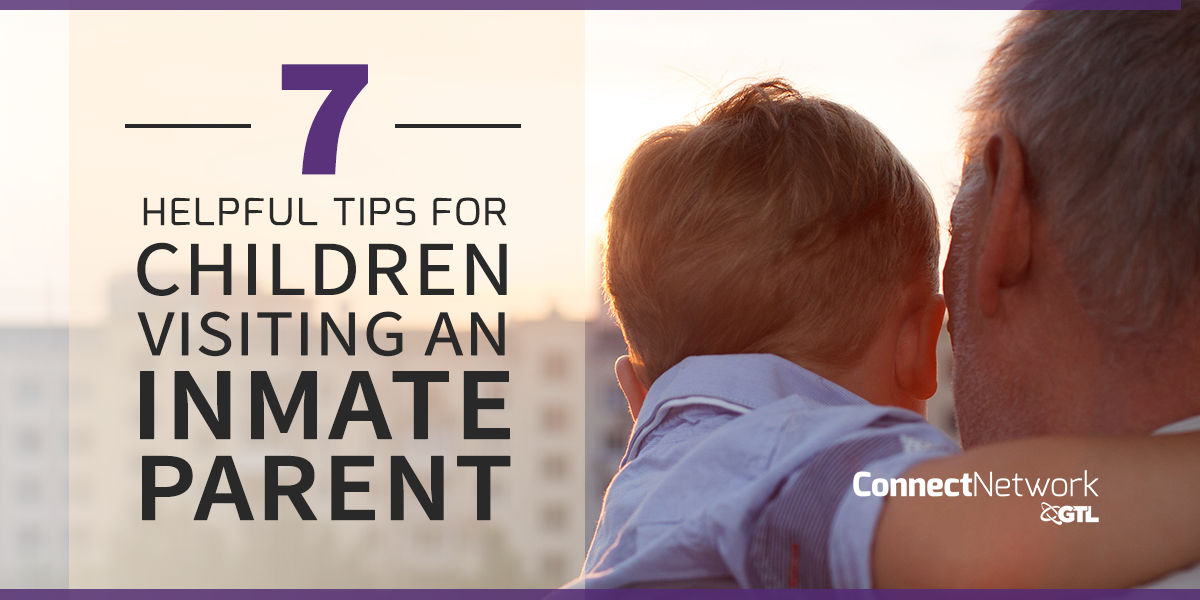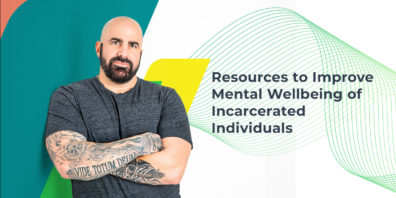7 Helpful Tips for Children Visiting an Inmate Parent
juin 23, 2016
Visiting an inmate family member can be difficult for children and the parent. Despite the circumstances, children need to feel safe, loved and protected by their parent.
Maintaining a relationship between a child and their incarcerated parent poses a unique challenge, but not an impossible one!
As long as parental rights have not been terminated, inmates have the right to be involved in their child’s lives.
Keeping lines of communication open between child and parent gives the inmate confidence and in his or her role as a parent.
Research from the Oregon DHS/OSA shows that this can increase the inmate’s “desire to create a safe and stable home and thus to work on problems that necessitated the incarceration”.
Consider these seven tips to help alleviate concerns of bringing a child to visit their inmate parent:
1. Prepare by first visiting the inmate yourself.
After visiting an inmate parent for the first time, a child may express sadness, anger, confusion or many other emotional reactions.
Part of avoiding these negative emotions is preparation.
It is recommended that you visit the inmate first without the child, so you can set expectations when it’s time for them to visit.
2. Update the inmate parent about his/her child’s daily life.
Another important step in your preparation for a positive and productive visit, is to speak openly with the inmate parent.
Incarcerated parents do not have the luxury of knowing the day-to-day of a child’s life. Update them about things like school and extracurricular activities, friends, new interests and so on.
Giving the parent as much information as possible prior to the visit helps to instill confidence in their ability to parent the child during the short time they have together.
3. Prepare your child prior to a visit by explaining to them what will happen.
Children of inmates need extra care before, during and after visits.
A correctional facility can be frightening, and helping the child set expectations before the visit can make it as positive as possible.
It’s important to communicate—talk about what will take place when you get to the facility, what will happen during the visit, what type of visit is allowed, and how the visit will end.
4. Obtain all security procedure information in advance.
To further prepare a child, ensure the child is not inadvertently carrying any contraband (a list of contraband can be obtained from the facility beforehand).
Children are often subjected to a dress code just like adults, so help them choose an outfit that doesn’t break the code.
SEE ALSO: Visitation for Inmates: What You Need to Know
5. Help time pass smoothly.
If extended travel is required to get to the facility, be aware that making the travel and waiting periods more comfortable can help keep a child from feeling scared or nervous.
Consider bringing activities, snacks and extra toys to keep your child busy on the trip.
These items may not be allowed in the visiting area. Familiarize yourself with what is and is not allowed prior to the visit.
A list of what is and is not allowed during a visit should be listed on the correctional facility’s website. If no list is present, we recommend contacting them directly before packing activities and other children’s items.
6. Understand the benefits of an in-person visitation.
For children under the age of eight, visiting an inmate parent is especially important because of their developmental level.
Older children will be able to use this time to better understand the circumstances of their parent’s incarceration and to build a connection outside of the immediate circumstances.
If distance is an issue, visiting can be difficult. See our recommendations at the end of this article, for other ways to maintain a relationship regardless of location.
7. Consider ways to overcome a child’s disinterest in visiting an inmate parent.
Ask yourself: does your child seem eager to visit his or her parent?
A child may not seem eager to visit a parent for many reasons unrelated to the circumstances. For example: a favorite TV show is on, or they are missing out on a day with friends.
Support the child as part of the process by helping determine when a good time could be for this important event. Their involvement in decision-making can help encourage more interest to participate.
Disinterest may also be a coping mechanism—where the child does actually want to go on a visit, but has difficulty accepting the situation.
It’s possible that starting with another form of communication may ease a child into engaging further. Learn more about these alternatives below.
Other Forms of Communication For Children of Inmates
It is proven that in-person visitation is always the most effective and preferred way for maintaining open lines of communication between a child and their incarcerated parent.
However, a lack of time and other resources mean that additional forms of communication should also be used.
Letters, emails and phone calls are all ways that a child can keep in touch with their parent.
Depending on the child’s and inmate’s literacy levels, mail can be a great option. Note that all ingoing and outgoing mail can be inspected by the facility, and that correspondence is not private.
Pictures are sometimes allowed to be exchanged and should be sent regularly back and forth if allowed. Email or messaging systems are a great way to share these images. GTL/ConnectNetwork Messaging service may be offered in your loved one’s correctional facility.
Phone calls are another alternative to in-person visits. Inmates do not have open access to telephones and must have money in their phone account to pay for calls. Ensure first that funds are deposited for a phone call to occur.
In addition, some facilities allow for internet video visits allowing the visit to take place from home using a computer and internet connection. When applicable, this is an excellent way to keep a parent-child relationship strong when in-person visitation is not possible.
Conclusion
Visiting an inmate in-person can be the most important piece of the puzzle when it comes to the parent/child relationship.
Physically seeing a parent helps a child to feel less fearful.
What’s more, it aids in the bonding process.
Remember the following to help ensure a successful trip to see a child’s loved one:
- Preparation for visiting an inmate
- Communication with the inmate and child
- Support before, during, and after a visit
Posted In: Blog



